Step back into a time when your local video store was the best place to go. Think about how expensive buying a movie was, how cheap a rental was, and how the internet was not a thing you could easily use. Enter WE KILL FOR LOVE, the documentary from Anthony Penta. Clocking in at just under three hours, and cut down from roughly five, Penta spent years studying and researching erotic thrillers, a subgenre that was lost with the video stores. He covered the history, distribution and even interviewed various names in the game. This documentary is a great example of doing something out of love, it shows how serious he was about getting this out and how hard he worked to learn every connection, ranging from noir films’ prototypes to the inability to access porn at the time of erotic thrillers’ boom.
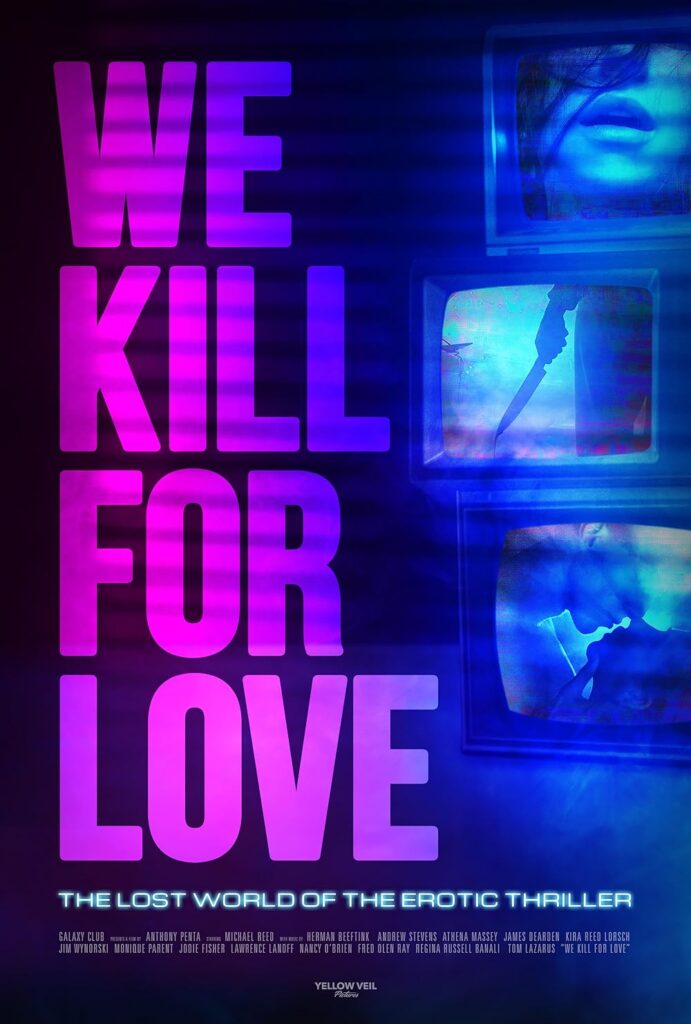
Penta spans eighty-odd years in this film, and looks at every angle imaginable. It’s not just “horny men couldn’t find porn so they watched these,” it looks at filmmaking for women by women. It looks at what went through the head of everyone involved when they made things. It even covers an honest, often overlooked, idea of how production companies saw these movies, how actors were affected after, and how writers and directors would get around releasing so many titles in one year. If you want to know what was going on during the video rental boom, if you want to know how 75 movies were released under one subgenre in 1994 but only a handful of books cover it, this is the movie for you. WE KILL FOR LOVE is an honest film that is full of heart, and yes boobs too, and it is worth dying over.
I sat down with Penta for an in-depth interview, and he really packed it out for us.
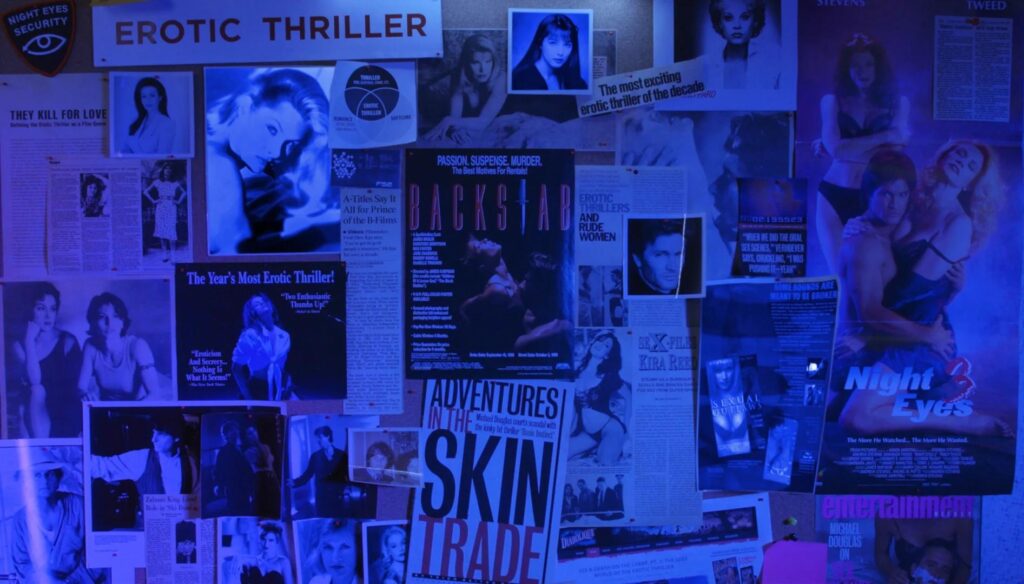
What initially made you want to make this documentary? And did you feel it was fulfilled by the end?
Sometime around 2016, after tracking down and watching about 50 obscure DTV erotic thrillers, I found a book at the library titled The Erotic Thriller in Contemporary Cinema, written by UK academic Linda Ruth Williams. This book, which for me was like a travel guide, articulated many things I hadn’t been able to put into words about the films I was seeing. Williams saw how the erotic thriller contained a cluster of interrelated themes and tropes, and that as a film movement it was much larger (and more self-aware) than had been previously acknowledged. As I found many more erotic thrillers I discovered the genre was roughly the same size and shape as film noir. There were over 700 films produced in a twenty-year heyday, the films are all united by certain themes and stylistic eccentricities, and there is a shadow-pantheon of glamorous actors specific to the films. It’s a large and fully articulated world.

None of this, for me, was the tipping point toward making a documentary. The tipping point was my growing anxiety over public discourse surrounding the erotic thriller, especially the obscure direct-to-video films. All of the coffee-table sized film history books I read studiously avoided any mention of the erotic thriller, which was puzzling to me given how the subgenre dominated home video for over a decade. Outside three academic books and a few articles in obscure journals, writing about the genre had been banished to armchair film reviews and clandestine internet forums. These were all very guy-oriented and the collectors of these films obsessed over female nudity, disregarding all else. The female icons of the genre were repeatedly dragged through the mud by this crowd in what looked to me like a never-ending churn of thinly disguised misogyny. As I became enchanted with the strange beauty of the films and how they slyly and smartly held a mirror up to their own audience, I realized there was probably no one but me who could — or would — make a documentary that extended the academic writing on the subject into the popular domain. Linda Ruth Williams’s book, a checkerboard of academic analysis and interviews with practitioners, pointed the way, as did a film I loved called LOS ANGELES PLAYS ITSELF, a movie about movies, which was structured like a long film essay. In many ways I feel like the erotic thriller chose me. I didn’t particularly want to spend six years of my life making one movie, but the films whispered a plea into my ear, and it was one I finally couldn’t ignore. “Who will tell our story?”
I’m hugely satisfied by how the film turned out and it has been my privilege to have constructed a permanent monument to these films and the people who spent their careers producing them. I feel like I did what I was asked to do. I also allowed the actors, directors, and producers of these films to finally speak for themselves, and I even interviewed the original explorers of this lost world, including Linda Ruth Williams.
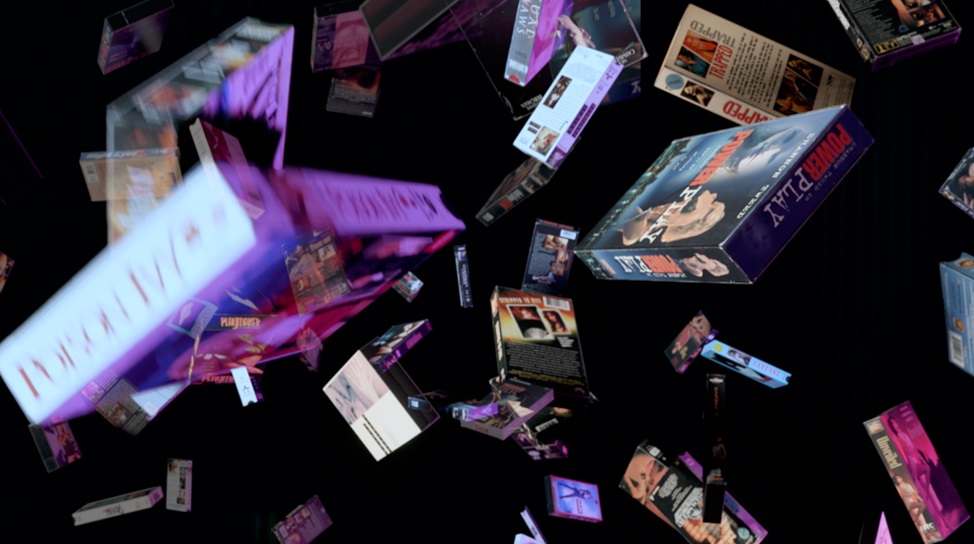
With your hours of research and nearly three-hour-long doc, how much had to be cut from the final movie?
I think the original cut was about five hours long. There was a lot of redundancy. Making a movie like this is like constructing a pyramid. The base is fairly wide and each “block” is a different concept or aspect of the genre. Each successive edit refines concepts and sometimes whole blocks have to be removed for the sake of time. In this way the film becomes shorter as you get toward the top. One unfortunate aspect of this process is that some interview subjects simply fall away as things are discarded. What they have to say may be said better by someone else, or the interview focuses on concepts no longer in the film. For instance, I interviewed the writer Duke Haney extensively about the history of Playboy and the significance of playmate Dorothy Stratten’s murder in 1980. Was her story a de facto erotic thriller? There was something about Dorothy Stratten’s story that made it a kind of Altamont to Playboy’s Woodstock. It was a terrific sequence but it was too long. Likewise I had many trope sections in which I showed how the sex/death duality of the erotic thriller was expressed in seemingly innocuous things, like hot tubs. I had a long section where I traced the history and use of glass in the erotic thriller, from window panes to mirrors and finally to telescopic lenses, and how at each stage, new themes around surveillance and voyeurism were introduced by technologies that reconfigured glass. Again, too long and technical. That will have to be for a book!
Was there anyone you couldn’t successfully interview? Or any movie you felt wasn’t given enough justice?
I think most people who wander into the lost world of the DTV erotic thriller discover Shannon Tweed pretty quickly. Shannon Tweed and Andrew Stevens are like the Adam and Eve of the DTV erotic thriller. For many people Tweed literally embodies the genre, and for this reason it would have been nice to have her in the movie. Tweed was on an episode of Married With Children as herself. On the show, Al Bundy, starstruck, mentions seeing Tweed in NIGHT EYES 3. I was looking forward to using that video! Andrew Stevens agreed to be interviewed but I could never get a response from Tweed or her representatives. Ultimately Tweed wasn’t a liability, as we were blessed with other gorgeous icons of the DTV erotic thriller, including Kira Reed Lorsch. Kira emailed me before the film premiered at the Overlook Film Festival in New Orleans and said “I’m coming!” It was amazing. Kira has an old friend in New Orleans who somehow got rich in the cigar business. He and Kira showed up every day in a big black carriage (a Ford Escalade) and whisked us off to every show and event. No step-and-repeat was safe from Kira. Whenever she was within ten feet of a camera, she had photos taken and she splashed them all over social media. Kira really promoted the film widely and made the premiere a magical event. It was literally like hanging out with a goddess.
There were many other people on my list of interview subjects. Some never replied to my emails or calls, others spoke with me on the phone but I could never manage to get them on camera. No big deal. I learned something from everyone. A few subjects on my list, such as Nikki Fritz, Terry Plumeri, and Larry Brand actually died during production. In the end, I got the right people in the film.
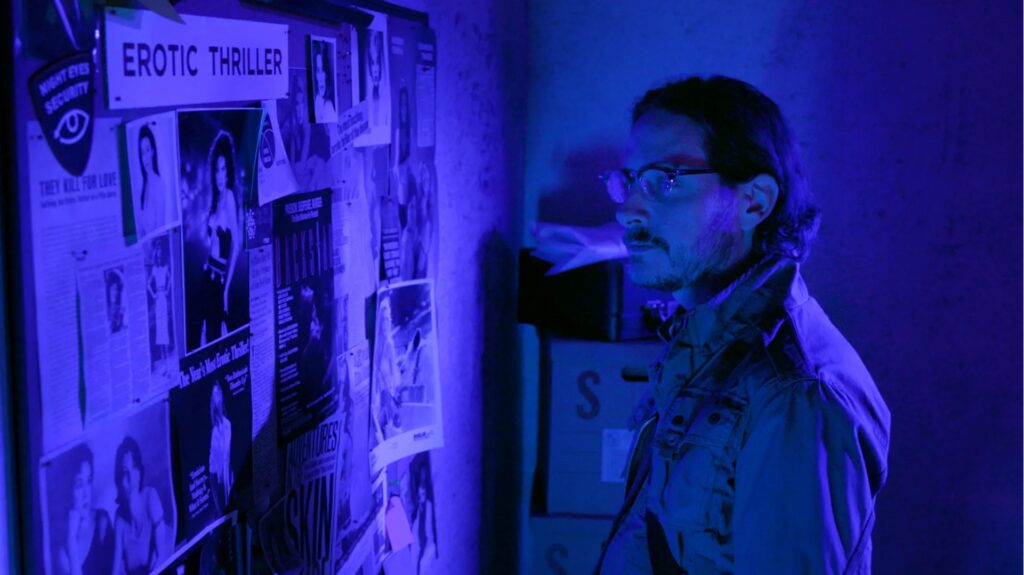
Any plans to do a VHS release of the doc since so many of these movies died on VHS?
I want to do this. How? Where? Who? I could easily shave a few minutes off the film and fit it on two 120-minute VHS tapes. Let’s make this happen.
Are there any plans to release some of these gems on a newer platform? Like, a boutique release of the NIGHT EYES series?
This is a difficult question as ownership of the films is ambiguous. The two companies who probably own the most are Shout! Factory and Multicom. Shout! Factory owns the Corman films, and they’ve released a few of their lesser known erotic thrillers on blu-ray recently, such as STRIPPED TO KILL, DANCE WITH DEAD, and FINAL JUDGEMENT, which was an unexpected and amazing release. That film was only released on VHS, and not even on laserdisc. To see it in pristine HD was miraculous. I’d really like to see Shout! Factory release THE FINISHING TOUCH (one of my favorite erotic thrillers) and the BODY CHEMISTRY series. Also, Rodman Flender’s IN THE HEAT OF PASSION. I still don’t know who owns the NIGHT EYES films. This is why it’s so difficult to release these films on disc. No one is sure who owns them, and no one knows how to locate the film negatives. I asked every film director and producer I interviewed the same question: Where are the negatives? No one knew. Andrew Garroni, the producer of the Axis films, owned the negatives to every Axis film. As a matter of fact, the film canisters for ANIMAL INSTINCTS were stacked in a corner of the office during my interview with him. That was a rarity. I’d like to see all of Playboy’s Cameo, Mystique, and Indigo films released on Blu-Ray, but who knows where those are? All the Playboy stuff was sold to an Estonian company years ago, and then last year that company was sold to some other company. I think the answer here is for someone to start a nonprofit organization like Eddie Muller did with the Film Noir Foundation. Then they can raise money and begin tracking these films down and preserving them. I have a feeling the master tapes for most DTV erotic thrillers (which in the 1980s and 90s meant D2 or Betacam) are all that is left, and the original camera negatives in most cases were discarded.
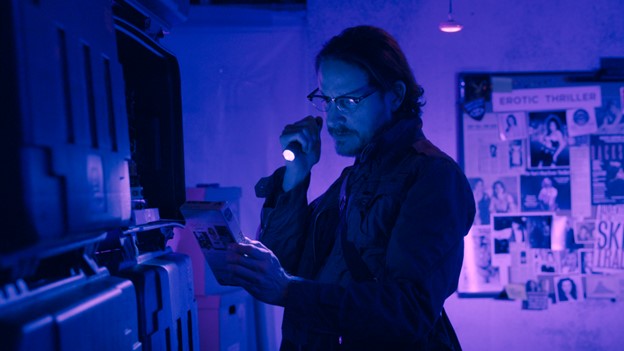
How did WE KILL FOR LOVE get picked up by Yellow Veil? And were you involved in Sam Coyle doing the slip?
I was posting WE KILL FOR LOVE updates on social media for a long time leading up to the film’s release. Numerous fans of these films commented they would like to see Vinegar Syndrome pick up the movie. So when it was time to look for a distributor, I simply contacted VS through their website. For the most part, VS only releases historic films shot on film. They are essentially a film restoration company. But they are in partnership with all these satellite companies — Deaf Crocodile, Fun City Editions, Yellow Veil, etc — who all benefit from access to Vinegar Syndrome’s central warehouse and shipping facility, which is OCN Distribution. It’s like a hub-and-spoke arrangement. The folks at Vinegar Syndrome passed me along to a man I can never thank enough, and that is Justin LaLiberty, the Director of Operations at OCN. Like me, Justin is a kind of quasi-scholar, historian, and archivist. Justin loved the documentary and passed it along to Yellow Veil. I couldn’t be happier. Prepping the film for distribution was a bit of a chore, but once that had been done, Yellow Veil took over from there. They hired a publicist, arranged for premiere screenings in New Orleans and L.A., got the film reviewed by Forbes and the New York Times, and produced their own poster for the film. I had originally photographed my own poster by convincing a hunky guy and hot girl I knew to pose in one of those lusty embraces typical of DTV erotic thriller posters. I had the guy holding a toy gun in the air and the girl holding a chef’s knife to his back. I thought it looked just like the cover of a VHS tape, but it was constantly getting red-flagged on social media for “violating guidelines”. Yellow Veil contacted an artist in their stable, Sam Coyle, and asked him if he could create a few designs. Sam came back right away with five or six different poster ideas. They were all incredible. That guy has talent. They were also sufficiently abstract. We chose the stacked TV image for the poster, and the single TV image for the Blu-Ray. It was Justin Timms at Yellow Veil who suggested we show the back of the TV for the reverse side of the Blu-Ray package. Brilliant. Sam is another person I need to properly thank one day. He lives in the UK, though. Something for the future.

What’s your dream cast, director, composer, production company and plot for an erotic thriller? I think it’s safe to say you could be considered the master of this subgenre after all that research, so what would you want to see?
The erotic thriller has a lot of different variants. There’s the noir-ish crime thriller with a hapless dupe and duplicitous femme fatale, the Hitchcockian suspense thriller of secret identities, the obsession thriller of fatal attractions. One of my favorites is the neo-Gothic thriller with a female protagonist. In the doc I have a special section covering this variant, which begins with a quote from an article about Gothic romance written by Joanna Russ in the 1970s: “To a large, lonely house comes the heroine….”. The erotic thrillers of the DTV era picked up this variant, and they ingeniously disguised that lonely house in all sorts of ways. In Katt Shea’s STRIPPED TO KILL, the remote house is transformed into a strip club. In Blain Brown’s I’M WATCHING YOU, it’s an artist loft complex, shot here in L.A. at a place called The Brewery. In Ralph Portillo’s BROKEN TRUST it’s an abandoned spa the protagonist inherits from her deceased father. In JANE STREET it’s simply an old apartment building in a foreign city. My dream erotic thriller would be a neo-Gothic thriller in this lineage. Herman Beeftink would of course compose the scary neo-classical score. The film could have lots of juicy ancillary roles for DTV erotic thriller icons like Doug Jeffery, Kira Reed Lorsch, and Monique Parent. As it happens, neo-Gothics like this are actually still being made, mostly for women’s television, and I’m loving them! Recent favorites are ISLAND OF SHADOWS, SEA OF SUSPICION, DOWN A DARK HALL, and SECRETS AT THE INN.
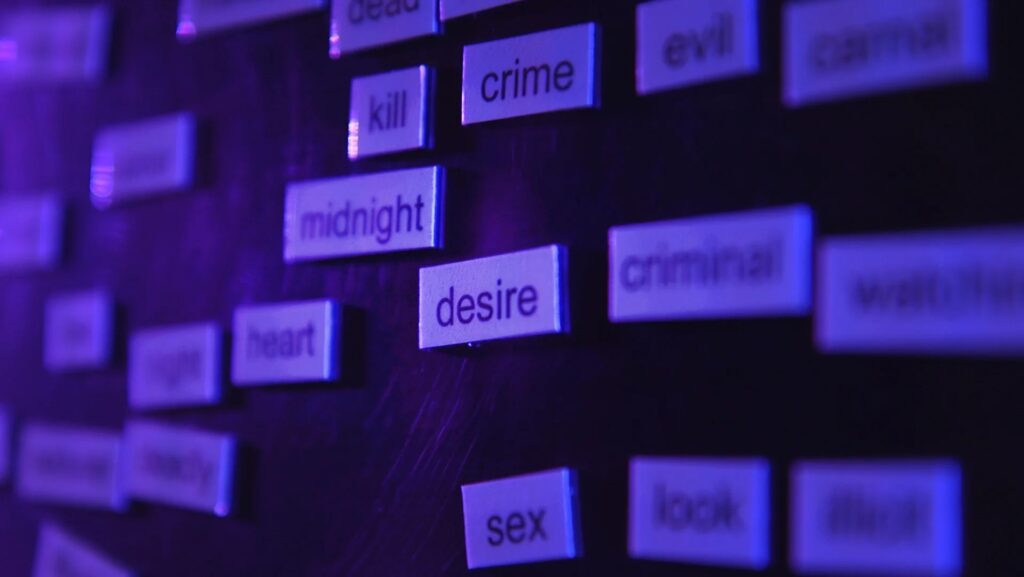
You just spent several years working on this, how has the reception been? How has the cooldown been? What’s next for you?
The reception has been terrific. We had a fantastic screening at Vidiots here in L.A. and lots of people from the movie attended — Amy Lindsay, Tom Lazarus, Nancy O’Brien, Blain Brown, Rodman Flender, Michael Reed, Athena Massey, and others. The movie is really finding its tribe and reviews across the board have been really favorable. I think there’s a special group of people out there who don’t realize they need this movie, but they are finding it. I’m not sure what’s next for me. I just finished a long contract documenting one of NASA’s planetary missions and I am taking some time to revive some unfinished projects, such as a long messy book I wrote about the erotic thriller during the pandemic. I’ve been meeting with one of the film writers I interviewed, Travis Woods, and we are looking into starting a summer screening series here in L.A. We’ve been given the green light by Shout! Factory and Multicom to show films in their catalog, and I could get some of the actors and directors to participate in Q&As, so it’s just a matter of finding venues and getting the word out. Travis calls it Cahiers du Cinemax!
Be sure to check out the WE KILL FOR LOVE linktree for more info on how to purchase the movie (or go here!), Penta’s casefile essay from 2023 and even a playlist of erotic thriller songs to get you in that special mood.
Tags: Andrew Stevens, Anthony Penta, Athena Masssey, Blu-ray, Cinemax, Documentaries, Doug Jeffery, Erotic Thrillers, fred olen ray, George S. Clinton, Herman Beeftink, Interviews, James Dearden, Jim Wynorski, Jodie Fisher, Kira Reed Lorsch, Lawrence Lanoff, Monique Parent, Nancy O'Brien, Nikki Fritz, Rodman Flender, Shannon Tweed, shout factory, Skinemax, The 1980s, The 1990s, Thrillers, Tom Lazarus, Travis Woods, VHS, Vinegar Syndrome, Yellow Veil, Yellow Veil Pictures, Zach Butcher

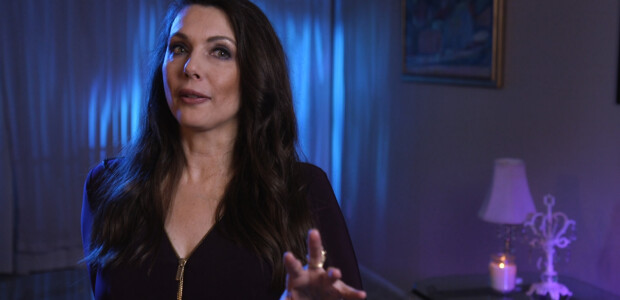

No Comments